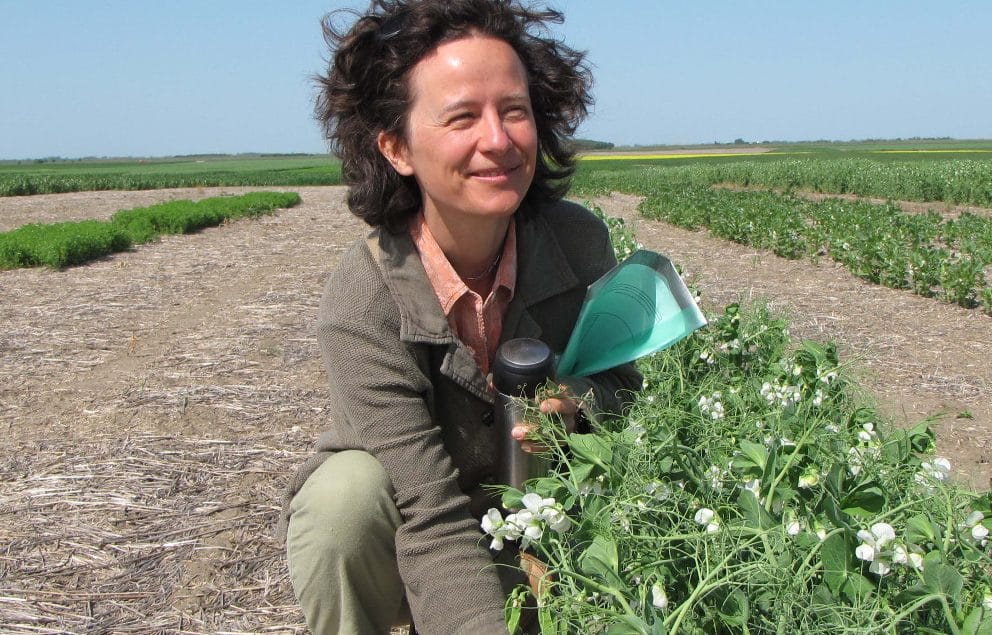Thirty University of Saskatchewan (USask) crop research projects have been awarded a total of more than $8 million through Saskatchewan’s Agricultural Development Fund (ADF), a program jointly supported by the federal and provincial governments and supplemented by industry partners.
“This major funding commitment from our partners will address critically important crop challenges to help create a prosperous and sustainable future for Saskatchewan producers and communities, while helping to strengthen Canada’s agricultural sector and feed a hungry world,” said USask Vice-President, Research, Karen Chad.
The ADF program is supported through the Canadian Agricultural Partnership, a five-year $388 million investment by the federal and provincial governments in strategic initiatives for Saskatchewan agriculture.
Major projects announced involving USask researchers include:
- Improving disease resistance in crops: $1.34 million awarded to USask pulse crop researcher Sabine Banniza for four projects aimed at improving resistance to root rot in peas, chickpeas, and lentils, and to blossom blight in coriander and caraway.
- Extending the growing season by developing early-sowing, fast-germinating seeds: More than $600,000 awarded to Canada Excellence Research Chair in Global Food Security Leon Kochian, a USask plant scientist and associate director of the Global Institute for Food Security, to develop canola and soybean varieties that grow quickly into robust plants with strong roots despite a short, cold growing season. The aim is to reduce crop risks when seeds are sown in the cold soils of May.
- Improving wheat breeding and production: $1 million contributed by the Saskatchewan government towards an $11.2 million project led by USask wheat breeder Curtis Pozniak and Agriculture and Agri-Food Canada (AAFC) molecular geneticist Sylvie Cloutier. The project, announced last July by Genome Canada and partners and administered by Genome Prairie, aims to develop disease-resistant, higher-yield commercial wheat using cutting-edge genomics that borrow genetic variation from wild varieties.
Examples of other innovative crop-related projects with potential economic impact include:
- Turning haskap and Saskatoon berries into anti-oxidant-rich nutritional supplements: USask food scientist Nicholas Low will identify phenolics—compounds known to have anti-oxidant, anti-cancer and anti-inflammatory properties—in the pulp of Saskatchewan-grown and bred haskap berries. The phenolics have many potential commercial applications, ranging from health supplements, to food additives and colorants, to fighting cancer.
- Using pulse proteins to replace animal products in the beverage industry: USask food research Supratim Ghosh will study new ways to extract proteins from pulses for use as beverage industry additives. Using plant proteins can improve digestibility and shelf-life for beverages. Ghosh’s proposed method could reduce both environmental impact and cost.
- Adding value to Saskatchewan’s lentils, peas and oats: USask protein researcher Mike Nickerson will develop new meat alternatives by fermenting a combination of lentils, peas and oats. Tempeh, a protein-rich and cake-like food traditionally made from fermented soybeans, lacks some essential amino acids. Blending pulses with oats shows promise in creating a “complete” protein that is not only high in protein and fiber, gluten- and soy-free, but also tasty and commercially competitive.












